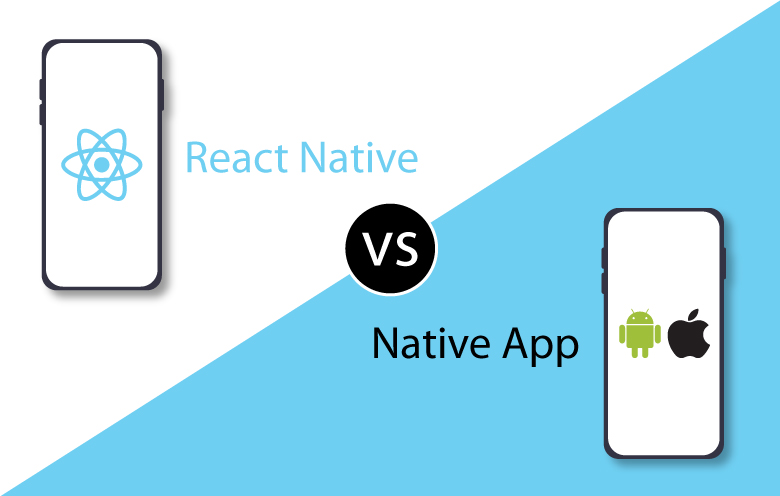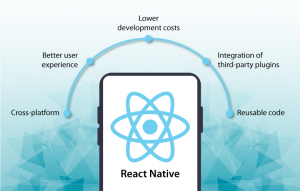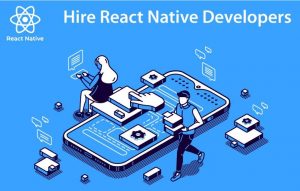React Native has been at the forefront of the mobile development world for some time now. It took the tech world by storm by allowing developers to create react native mobile app for both iOS and Android using a single codebase. Although React Native app development is proven to be successful for businesses, it’s crucial to know how it works and why it’s the best fit for your mobile project over other native technologies.
In this blog post, we will walk through some renowned advantages and drawbacks of React Native and also discuss other alternatives.
React Native – Why is it trending?
React Native is a popular JavaScript based mobile app framework that enables building natively rendered apps for iOS and Android, using a single codebase. React Native was first released as an open-source project by Facebook, and it has since grown to become one of the most popular mobile programming frameworks. Some of the world’s leading mobile apps, such as Instagram, Facebook and Skype use React Native development.
The global success of React Native apps can be attributed to several factors:
- Enterprises can use React Native to write code once and use it to power both their iOS and Android apps, saving time and resources.
- React Native was developed on top of React, a popular JavaScript library at the time the mobile framework was introduced, which makes it exceptional.
- The framework permitted frontend developers who could previously only work with web-based technologies to build complex, production-ready mobile apps.
React Native – What does it offer?
1. Platform specific code
The most attractive feature of React Native is its ability to generate platform specific code. When you are developing a mobile app, the framework automatically detects the platform it’ll operate on. Essentially, it generates the optical code for the right platform, resulting in faster development time.
2. Best suitable for front-end developers
Since the majority of the code is written in JavaScript, React Native simpler for any front-end developer to create an app. To get the hands-on with RN, a front-end developer only needs to be familiar with React.js, platform APIs, a few native UI elements and any platform specific design concepts.
3. Quick development time
React.js has the Hot Reloading feature, which allows developers to automatically reload a mobile app. This speeds up the development process and saves time.
4. Ready to use UI libraries
The React Native ecosystem includes component UI libraries that aid developers in creating a unified user interface. Shoutem, Expo, native base and other UI libraries save time that would otherwise be spent creating them from scratch. Instead, now the developers have more time to be focused on innovation and ideas rather than constructing libraries roots.
These are some of the primary features that distinguish React Native.
What are the alternate options for Native mobile apps?
Ionic
Ionic is an open-source SDK for developing hybrid mobile apps. It aids in the creation of nativelike experiences through the use of HTML, CSS and JavaScript. Ionic is based on Angular, so if you know how to use Angular, you’ll have no trouble picking up Ionic.
Interestingly, it comes with many pre-installed components that make development a breeze. Because it uses a hybrid approach to product development, it’s also a suitable choice for speedy prototyping. However, when compared with React Native, it is slower in terms of performance as it utilizes WebView.
Apache Cordova
Another mobile app development platform is Apache Cordova, which allows developers to create apps using CSS, HTML and JavaScript. As a result, you won’t have to rely on Android, iOS, or Windows platform-specific APIs. However, Apache Cordova, just like Ionic, uses WebView, which may limit your options. For instance, because JavaScript is a single-threaded language, having too many things performing in the codebase can lead to issues such as delayed animations and slow app responsiveness.
PhoneGap
PhoneGap is friendly for developers. It has multiple frameworks and libraries at its disposal. It’s based on the “write once, run on every platform” motto, so you can take advantage of cross-platform development. Simply choose your preferred web technology, and your app will work across all platforms without the need to create different versions for each.
Unfortunately, PhoneGap apps may have inferior user experience because web technology was designed for the web, not for mobile apps. This makes it difficult to work with animations. Besides, you might run the risk of facing the same issues of web apps, such as browser-specific bugs.
Xamarin
Xamarin is a cross-platform mobile app development tool that lets engineers exchange up to 90% of their code between platforms.Xamarin creates apps for all mobile devices using a single language, C#.
Because Xamarin is natively compiled, it’s a popular choice for creating high-performance apps with a native look and feel. However, there are numerous drawbacks in the platform that might cast a negative light on it, such as the difficulties you may encounter when integrating third-party resources with your Xamarin app. Thus, Xamarin cross-platform development loses its main advantage when compared to other native solutions.
Get future-ready with React Native!
React Native is an excellent mobile development framework that works seamlessly on any platform or operating system. It’s a framework that’s popular among organizations as well as developers. Moreover, React Native not only saves up on your time and resources, but also speeds up the development process.
While a native iOS and Android solution is a viable option, React Native for cross-platform is superior in terms of giving a consistent Ui and high performance. What more could you possibly want? With our React Native development services, you can expect your product to reach a larger audience in no time.







